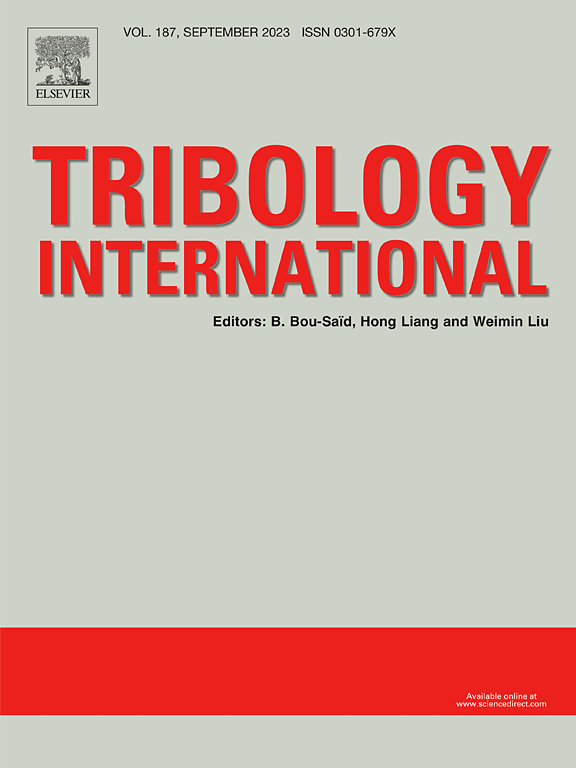电火花切割冷热处理铬合金925的组织细化和摩擦学响应
IF 6.1
1区 工程技术
Q1 ENGINEERING, MECHANICAL
引用次数: 0
摘要
低温处理提高了材料的可加工性,而铬合金925是一种难以加工的材料。在目前的工作中,采用- 185℃,12 h的浸泡时间进行深低温处理,以消除残余应力并提高材料的可加工性。回火在300℃下进行,时间为3 h,并在两种不同的条件下进行冷却,即在环境条件和炉内环境中分别进行冷却。采用x射线衍射分析(XRD)对加工后的铬合金925样品进行了表征。能量色散x射线光谱分析(EDAX)和扫描电子显微镜分析(SEM)的微观结构变化。然后对样品进行显微硬度测量和线切割加工(WEDM),以评估低温处理和回火对材料可加工性的影响,包括材料去除率、表面粗糙度和切口宽度。采用熵- edas法对线切割工艺参数进行了优化。结果表明,经低温回火处理的铬镍铁合金925具有细化的晶粒尺寸和表面形貌。低温回火处理的925合金由于在热处理和回火过程中组织更加细化,具有较高的显微硬度值和可加工性。优化结果表明,当脉冲开启时间为25µs,脉冲关闭时间为48µs,输入电流为4 a时,表面粗糙度最小,材料去除率最大,切口宽度最大。这些合金在燃气轮机轴和泵轴上得到了应用。本文章由计算机程序翻译,如有差异,请以英文原文为准。
Microstructural refinement and tribological response of Cryo-Thermal treated Incoloy 925 using WEDM process
Cryogenic treatment improves the machinability of a material and Incoloy 925 is one of the hard-to-machine materials. In the current work, Incoloy 925 is processed using deep cryogenic treatment at −185 ºC with 12 h of soaking time to relieve the residual stresses and to improve the machinability of the material. Tempering was carried out at 300 ºC for 3 h and cooled under two different conditions, viz., in ambient conditions and the furnace environment individually. The processed Incoloy 925 samples were characterized using X-ray diffraction analysis (XRD). Energy dispersive X-ray Spectroscopic analysis (EDAX) and Scanning Electron Microscopic analysis (SEM) for microstructural changes. The Specimens were then subjected to microhardness measurements and wire electrical discharge machining (WEDM) to assess the effect of cryogenic treatment and tempering on the material's machinability using material removal rate, surface roughness, and kerf width. The process parameters of WEDM were optimized using Entropy-EDAS methods. It was understood from the results that the cryo-treated and tempered Incoloy 925 exhibited refined crystal size and surface morphology. The cryo-treated and tempered Incoloy 925 with furnace cooling exhibited a high microhardness value and machinability owing to more refinement in microstructure during the treatment and tempering process. From the optimization results, a minimum surface roughness, maximum materials removal rate and kerf width were obtained for a pulse on time of 25 µs, a pulse off time of 48 µs and an input current of 4 A. These alloys find their applications in gas turbine shafts and pump shafts.
求助全文
通过发布文献求助,成功后即可免费获取论文全文。
去求助
来源期刊

Tribology International
工程技术-工程:机械
CiteScore
10.10
自引率
16.10%
发文量
627
审稿时长
35 days
期刊介绍:
Tribology is the science of rubbing surfaces and contributes to every facet of our everyday life, from live cell friction to engine lubrication and seismology. As such tribology is truly multidisciplinary and this extraordinary breadth of scientific interest is reflected in the scope of Tribology International.
Tribology International seeks to publish original research papers of the highest scientific quality to provide an archival resource for scientists from all backgrounds. Written contributions are invited reporting experimental and modelling studies both in established areas of tribology and emerging fields. Scientific topics include the physics or chemistry of tribo-surfaces, bio-tribology, surface engineering and materials, contact mechanics, nano-tribology, lubricants and hydrodynamic lubrication.
 求助内容:
求助内容: 应助结果提醒方式:
应助结果提醒方式:


